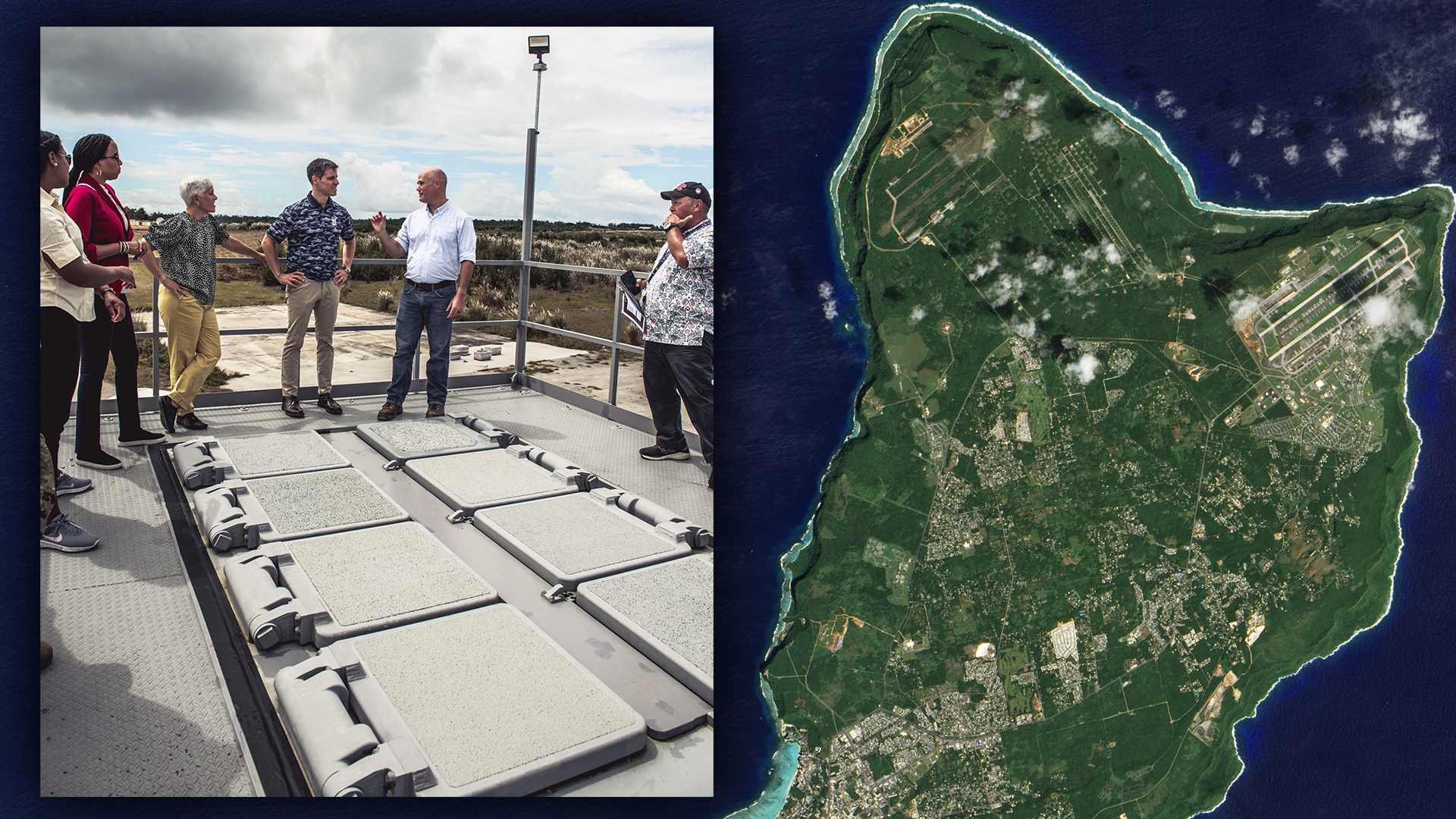We have gotten what appears to be our first view of a Mk 41 vertical launch system (VLS) for the Aegis Ashore air defense system that has been installed on the highly strategic American island of Guam in the Pacific. The land-based Mk 41 launchers are one step toward addressing the vulnerabilities of the U.S. military bases on the island to attack — something that China, in particular, has directly referenced in the context of a full-scale conflict in the region. Ultimately, Aegis Ashore on Guam will be just one element in plans to make the island’s airspace the most heavily defended anywhere on Earth.
A photo showing the VLS array installed in an above-ground structure was published by the Defense Visual Information Distribution Service (DVIDS) on October 17. The image was part of a series from Joint Task Force Micronesia showing a visit to the island by Acting Under Secretary of the Navy Tom Mancinelli.

According to information provided by DVIDS, Mancinelli received briefings from military leaders on “critical defense infrastructure, force readiness, and emerging threats in the Indo-Pacific region.”
Mancinelli was also shown flying over the island in a U.S. Navy MH-60 Seahawk helicopter, all part of his gaining a “comprehensive understanding of key strategic locations across the island, highlighting Guam’s essential role in U.S. military operations and regional security.”
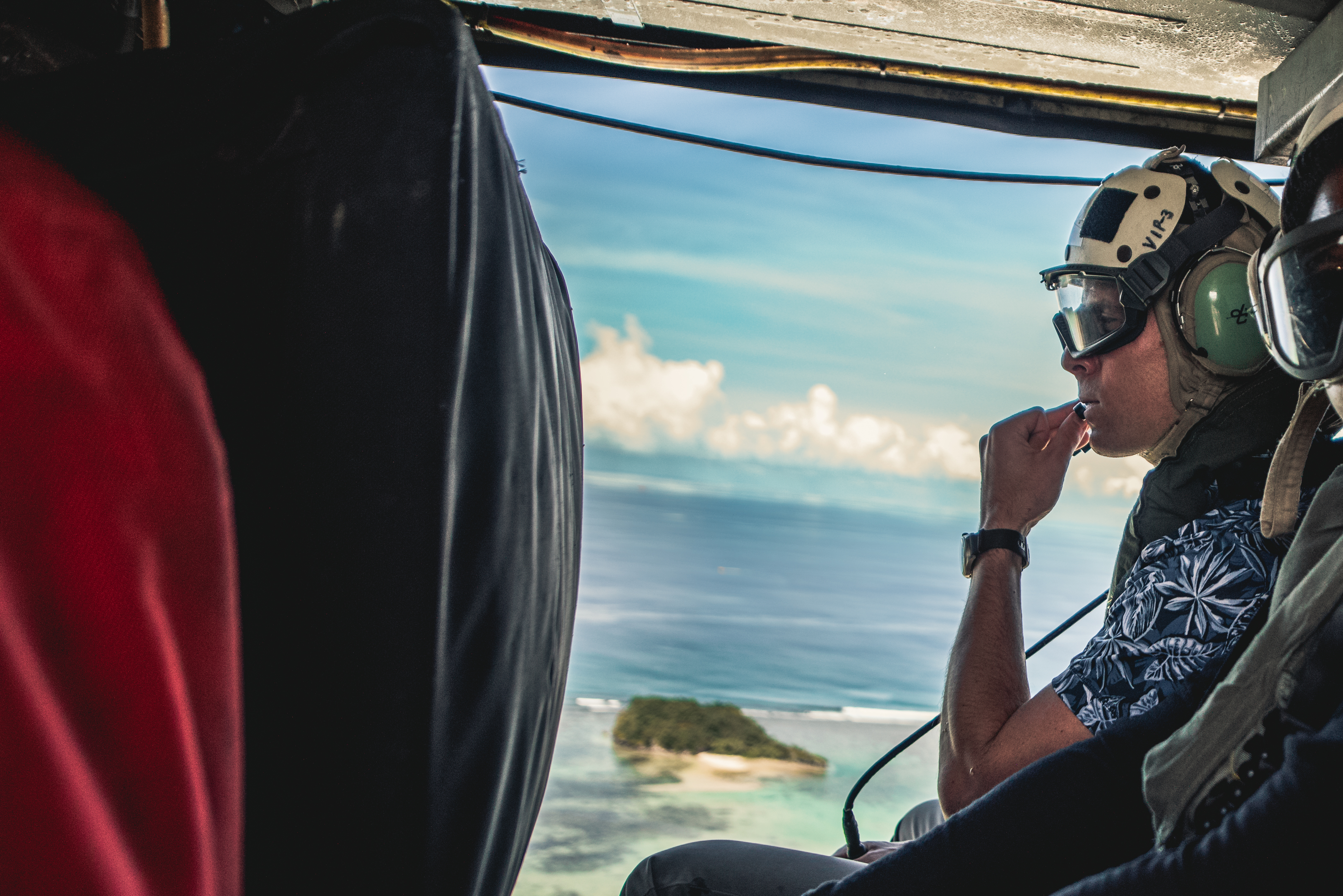
Most intriguing, however, is the photo showing the Mk 41 VLS array, the caption of which actually describes Mancinelli’s tour of a different air defense system — the U.S. Army Terminal High Altitude Area Defense (THAAD) battery on the island.
As TWZ has discussed before, THAAD has been deployed continuously to the island for many years now. It was sent there particularly to counter the possibility of a North Korean strike, as well as any other potential contingencies, but the growing threat from China far eclipses that of North Korea.
As part of the efforts to drastically upgrade Guam’s defenses, the U.S. Navy is installing a version of the Aegis Ashore system on Guam, in addition to similar facilities in Poland and Romania, plus a dedicated test site in Hawaii.
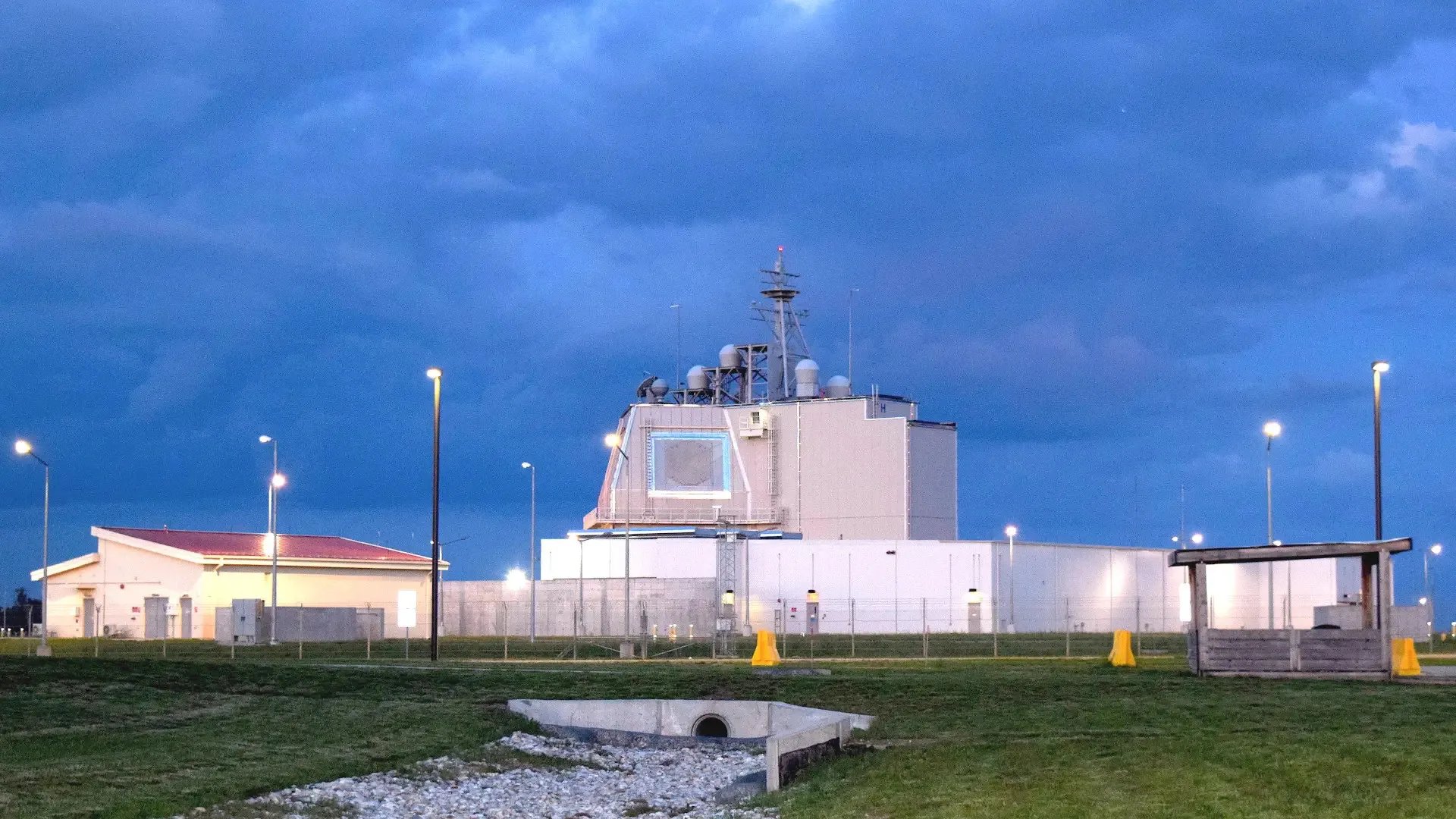
Typically, Aegis Ashore facilities comprise a main ‘deckhouse’ and associated support building, as well as the VLS arrays seen in the photo at the top of this article.
The deckhouse accommodates the Aegis Combat System and AN/SPY-1 radar, among other things, and mimics portions of Flight IIA Arleigh Burke class destroyers. This reflects the Aegis Ashore’s heritage in the sea-based Aegis Ballistic Missile Defense (BMD) system, which you can read about in more detail here.

Aegis Ashore is primarily designed to engage ballistic threats during the midcourse portion of their flight outside the Earth’s atmophere using SM-3 interceptors. However, the Mk 41 is a modular launcher, meaning that additional anti-missile interceptors, such as the terminal-stage intercept and anti-air SM-6 and the forthcoming Glide Phase Interceptor (GPI), which could also be added. With its ability to take down certain incoming hypersonic threats, as well as other weapons, the GPI could be especially relevant for the defense of Guam. With additional launchers, even dispersed around the island, shorter-ranged missiles, such as the Evolved Sea Sparrow Missile (ESSM) Block II and even the latest SM-2s, could feasibly provide protection against air breathing threats, such as cruise missiles and drones. Patriot interceptors are now also now a possibility.

While its capabilities are much in demand, there are various issues that make the installation of the traditional Aegis Ashore more complicated in Guam.
Not only does the island have limited space for such a facility with the right lines of sight for its radar and radio systems, but the terrain is mountainous. In its basic configuration, Aegis Ashore needs a relatively large amount of flat open space and it has to be positioned to maximize radar coverage relative to potential threats. The difficulty in installing Aegis Ashore in an environment like this contributed to Japan’s decision to abandon its own plans for the system.
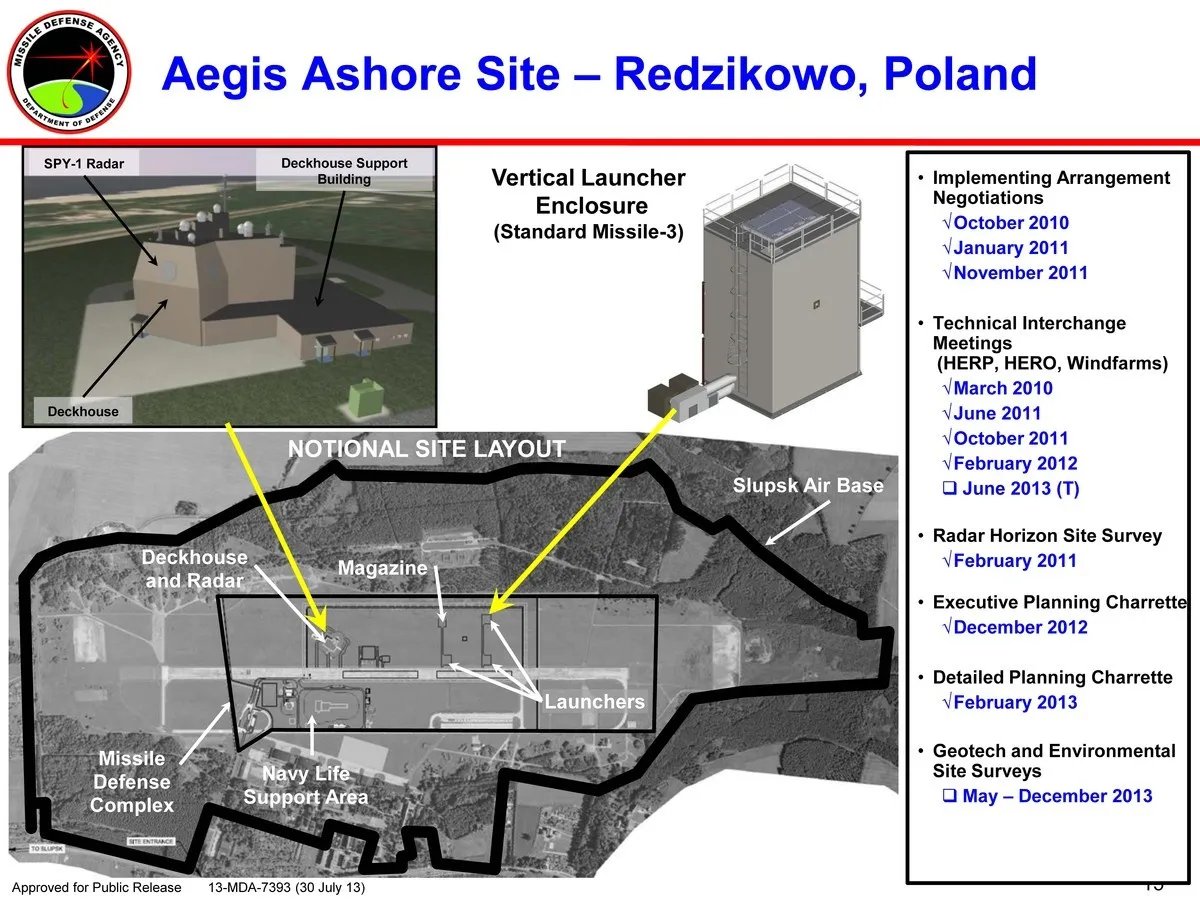
As TWZ wrote in the past, “placing portions of a future Aegis Ashore system on Guam in facilities underneath mountains or on mobile platforms on land, or even just off the coast, could certainly help with figuring out exactly how to make it work, from a basic design perspective, within the physical limitations that the island imposes.”
The U.S. military previously said they planned to have the site operational by 2026. We have approached the Navy for comment on the current status of Aegis Ashore on Guam.
Ultimately, Aegis Ashore should be much better adapted to Guam’s specific requirements, forming part of the planned Enhanced Integrated Air and Missile Defense (EIAMD) system.
Last year, the U.S. military revealed that a total of 20 separate sites were currently under consideration to host surface-to-air interceptors, radars, and more, under EIAMD.
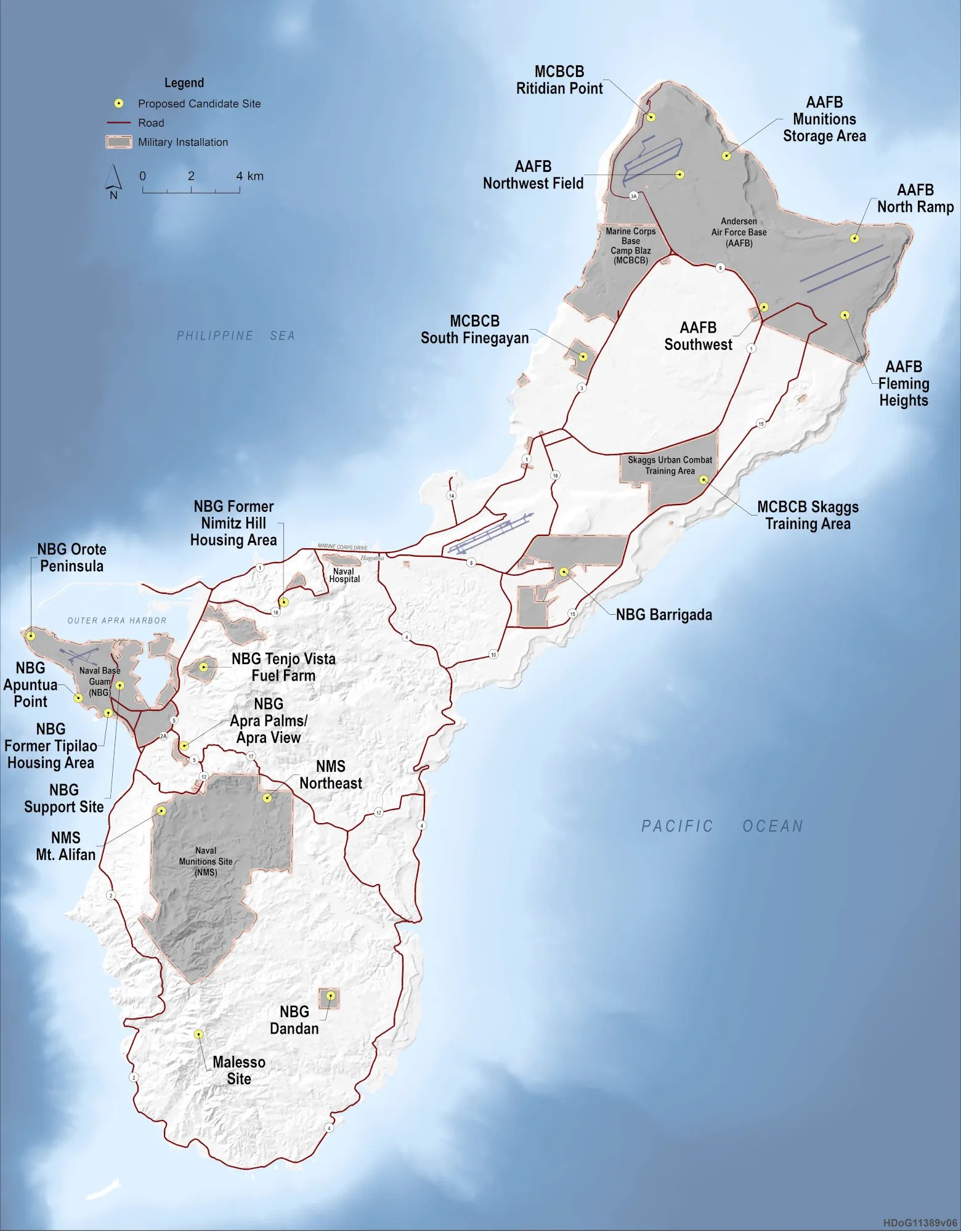
Using a distributed and tiered ‘system of systems’ approach, EIAMD is planned to provide 360-degree air and missile defense for Guam, with capabilities to deal with a wide spectrum of aerial threats.
While the VLS array photographed last week may look familiar, overall, Aegis Ashore in Guam will probably look very different from the sites in Eastern Europe.
As well as the potential to integrate additional missiles into the versatile Mk 41 VLS, Guam’s Aegis Ashore could have its various elements distributed to a much more significant degree than its predecessors, improving survivability and making better use of the island’s challenging geography.
In the past, there was talk of the possibility that portions of Guam’s Aegis Ashore site could go into bunkers underground or onto mobile platforms or even vessels. Based on this one photo, the site uses the standard above-ground structure for its VLS — at least for now.
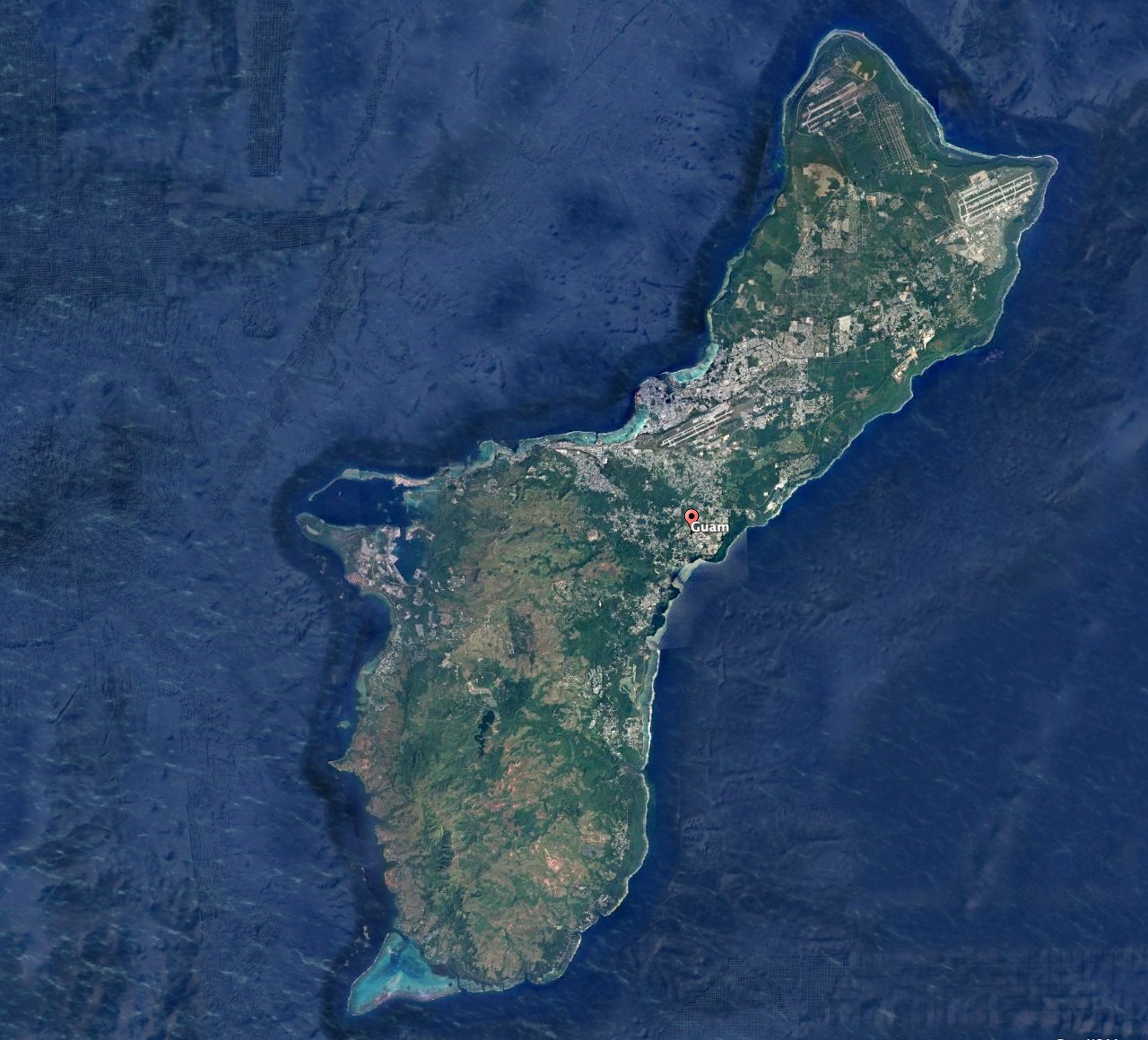
“I can see Aegis being underground or mobile,” the Missile Defense Agency’s (MDA) director, U.S. Navy Vice Admiral Jon Hill, said, back in 2021. “It’s not new science separating radars from weapons.”
That might still be an option in the future, especially as the Pentagon is well aware of the potential vulnerabilities of a fixed above-ground facility, especially in a major conflict with a near-peer adversary, like China.
EIAMD will also include at least four AN/TPY-6 radars, which were formerly known as the Homeland Defense Radar-Guam. This radar makes use of technology developed for the Lockheed Martin Long Range Discrimination Radar (LRDR) used in Alaska.
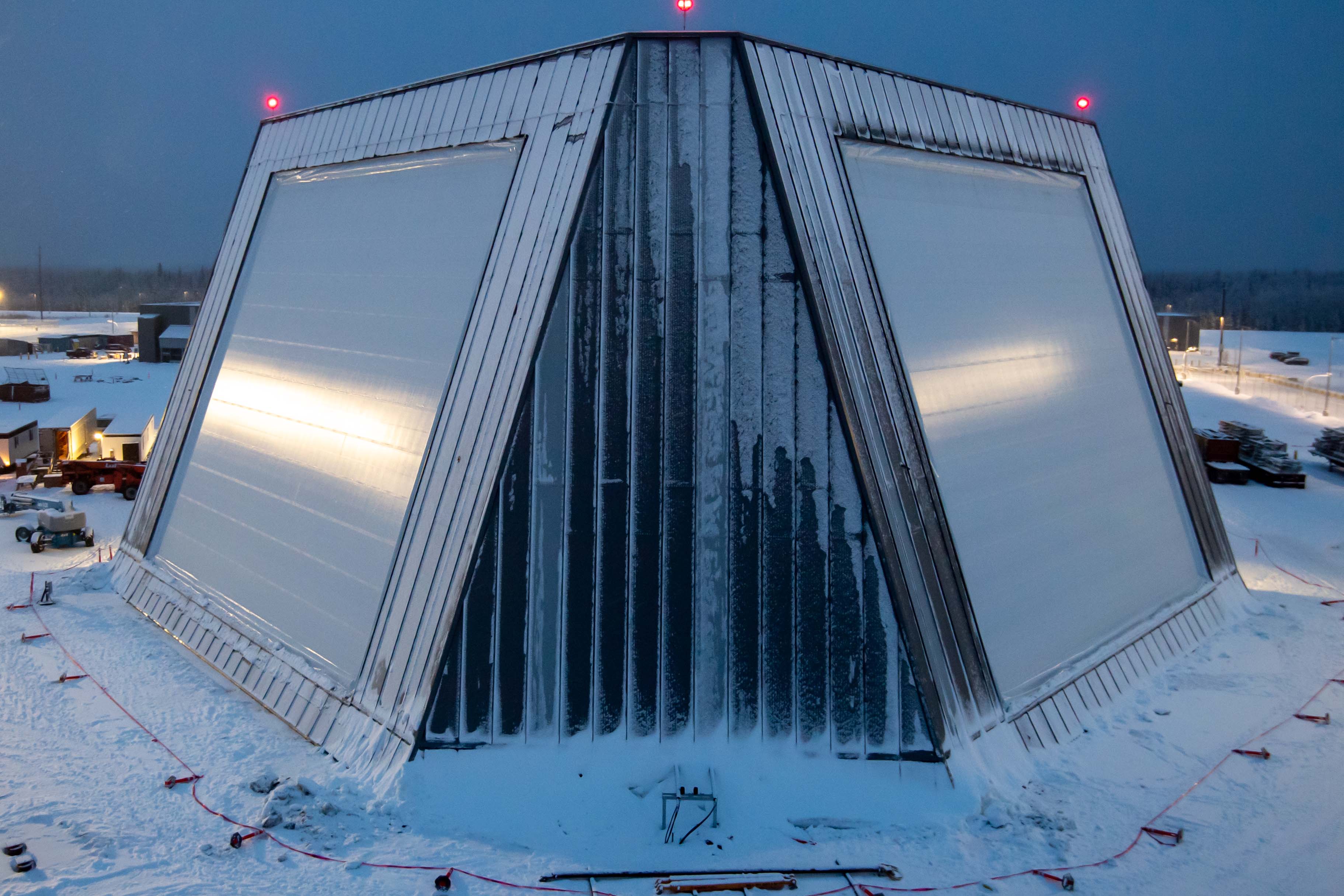
MISSILE DEFENSE AGENCY
As we have discussed previously, regardless of any vulnerabilities that might be inherent in the static and above-ground nature of the basic system, Aegis Ashore is intended to primarily provide an additional line of defense against limited ballistic missile strikes launched by smaller ‘rogue’ actors, such as Iran. It is not seen as a broader strategic deterrent or a more robust missile defense capability for an all-out war with a peer competitor.
Taken by itself, Aegis Ashore would be vulnerable to attack by China, which would use saturation strikes by its growing ballistic missile arsenal to overwhelm it, as it targeted the various U.S. military bases across the island.
However, in Guam, Aegis Ashore by itself would be more about providing complementary coverage to other anti-missile defenses, including the aforementioned THAAD. That system has its own limitations, only being capable of intercepting ballistic missiles in the terminal stages of their flight. At the same time, its AN/TYP-2 radar is unidirectional, so it cannot provide 360-degree coverage against incoming threats. But as the island’s defenses rapidly evolve, Aegis ashore will be a core component of the sprawling Enhanced Integrated Air and Missile Defense system. Patriot, directed energy systems, and the Army’s new Enduring Shield lower-tier air defense system, among others. are all likely to play a part. Taken together, this highly diverse and distributed system, which will also be able to link with warships, aircraft, and especially space-based surveillance systems, will make Guam arguably the most highly defended piece of land on the planet.
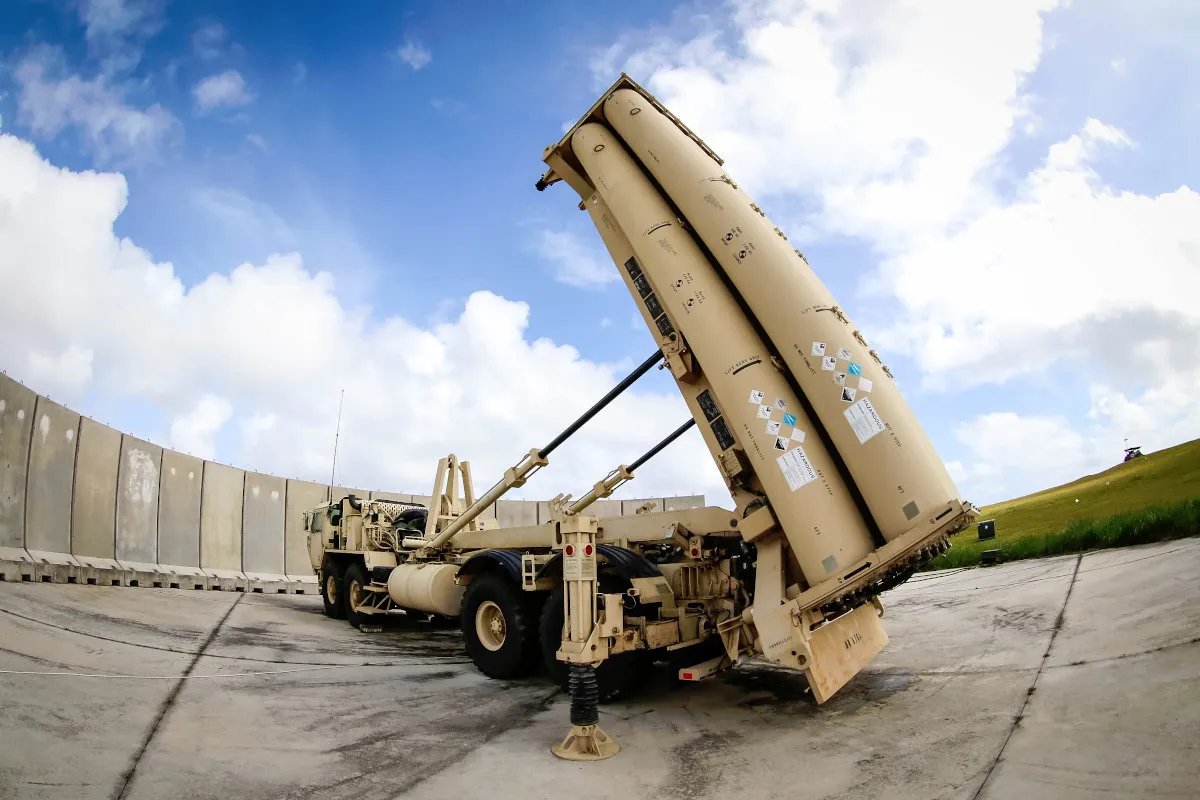
At the same time, even with the best air defenses available, wider concerns about survivability are driving the U.S. military to work on expanding its available basing options across the Pacific, to provide alternatives to well-established bases like those in Guam. This includes alternate operating locations on nearby islands in the Marianas archipelago.
Even though questions remain about how Aegis Ashore in Guam will eventually look and what kinds of more survivable and other elements will be included in the overall air defense architecture, the photo of the new VLS underscores the fact that the Pentagon is now on its way to drastically upgrading the island’s defenses. Hopefully the move to finally do so isn’t too little, too late.
Contact the author: thomas@thewarzone.com
